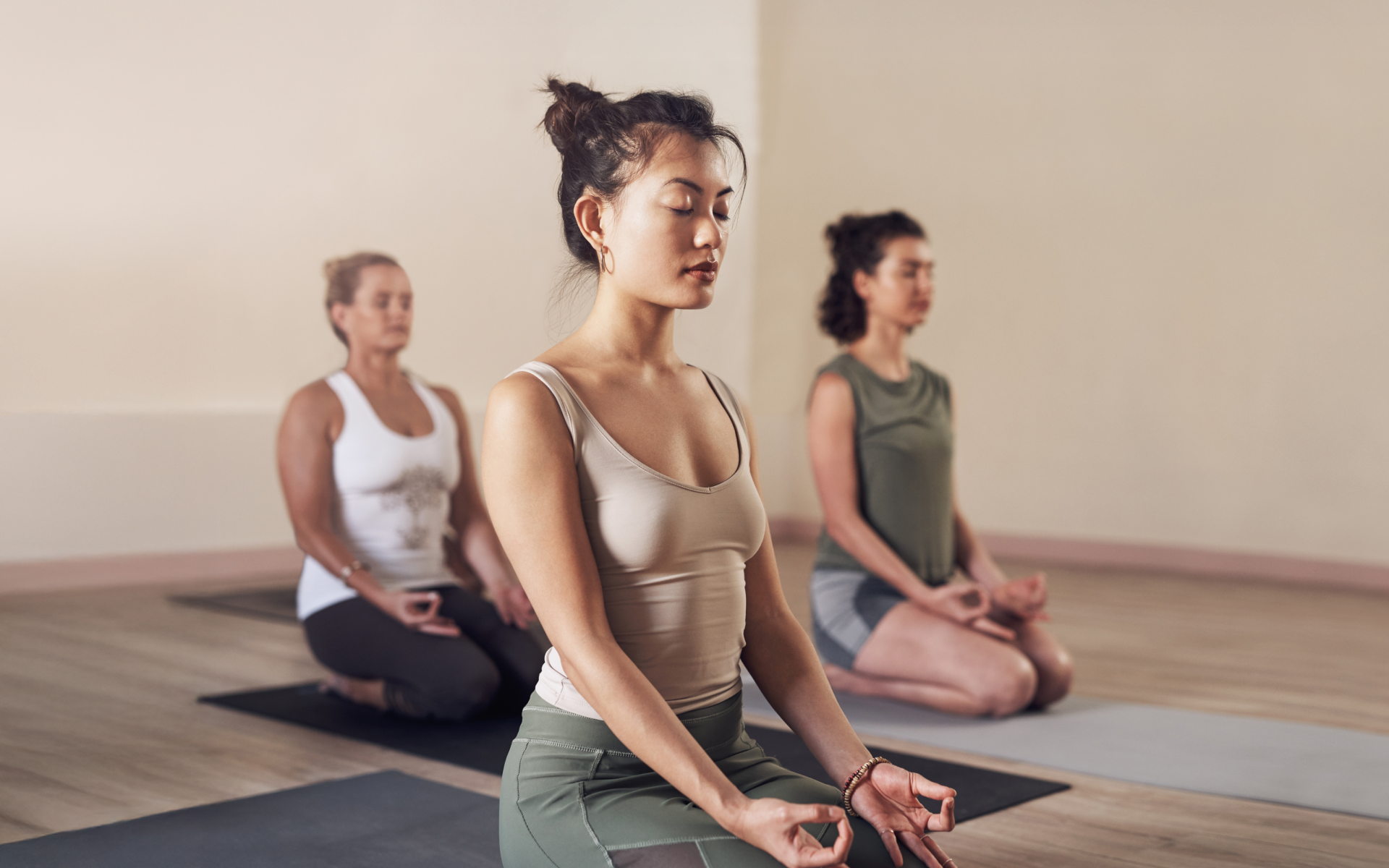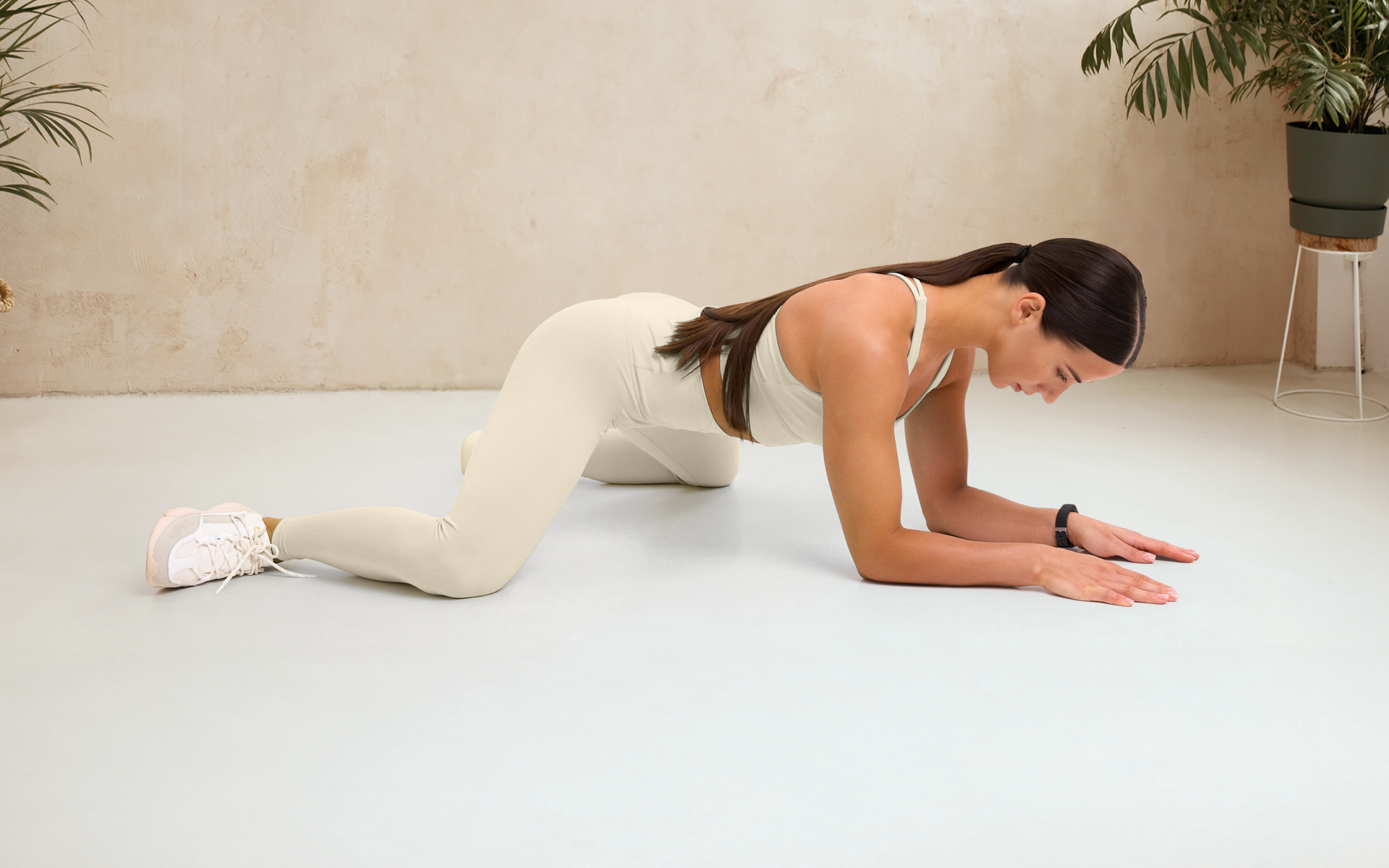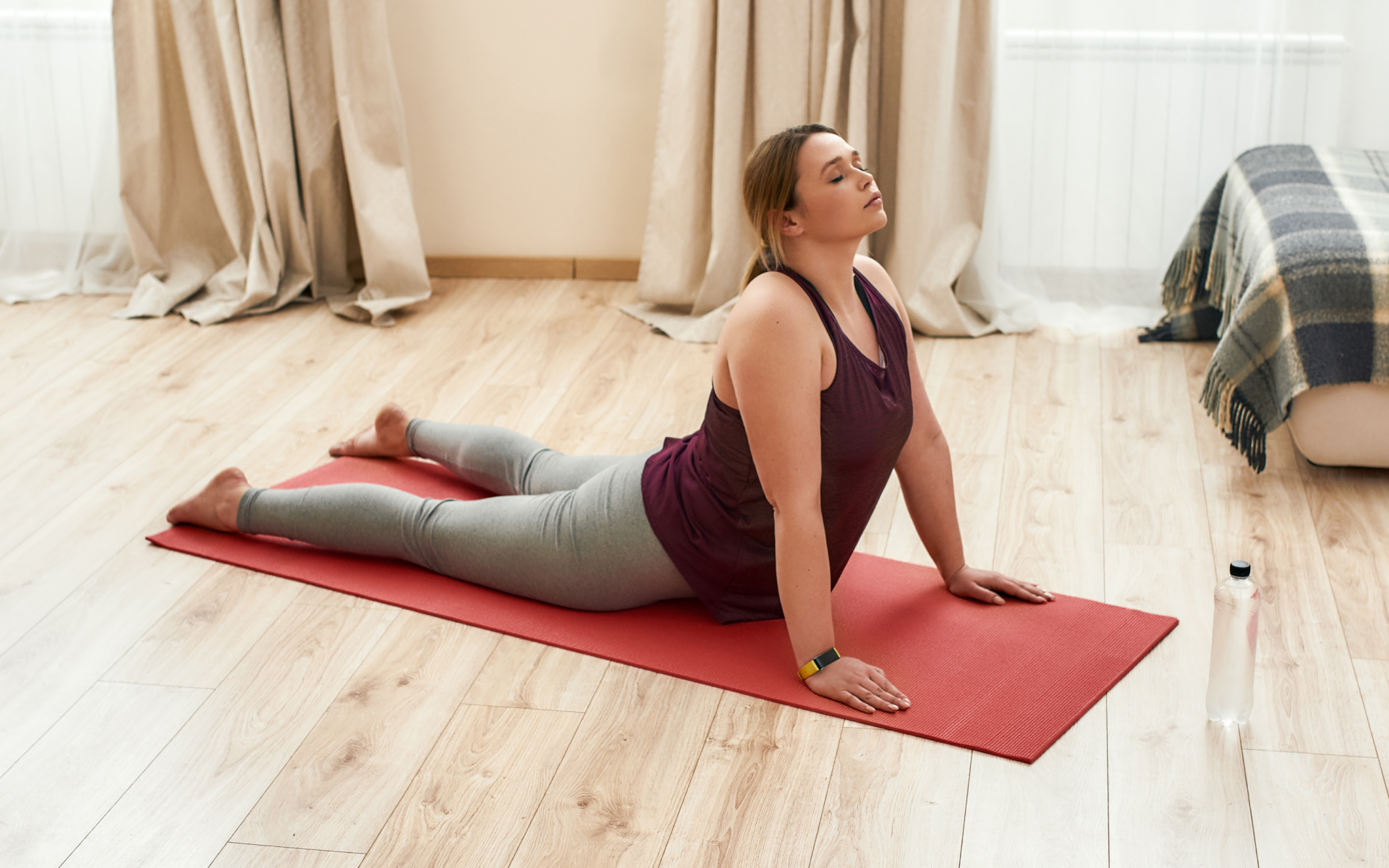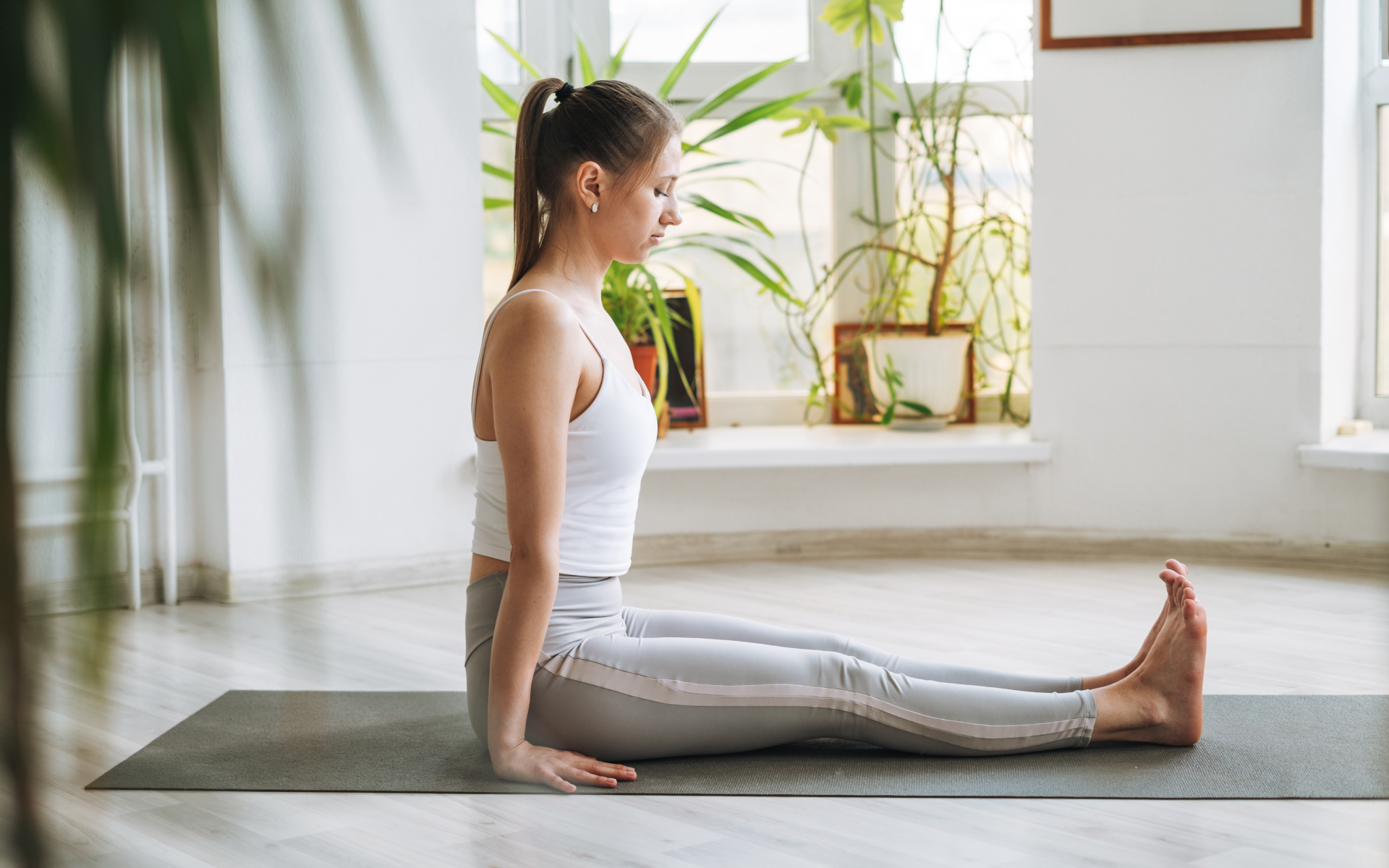In the mainstream health and fitness world, we’re often programmed to think that in order to improve our health, we need to be doing intense cardio or lifting sessions. While these types of workout have a plethora of health benefits, your body can also benefit from slow and purposeful movements. In addition, your mind can also benefit from doing these types of movements.
Engaging in somatic activities such as yoga, Pilates, and dancing is beneficial for your mental and physical health. These activities facilitate mind-body connections and can improve balance, flexibility, strength, and body awareness (1). One of the great things about somatic exercises, including stretches, is that you can do them from almost anywhere and without any assistive equipment.
Somatic exercise for beginners can be a bit intimidating and even slightly confusing. One way to get started is by doing somatic stretches or somatic yoga. You can even start your journey with somatic exercise by doing somatic stretches in bed. This will allow you to feel comfortable, relaxed, and free of external pressures you may experience in a class.
Doing somatic stretches in bed is a great way to get your muscles and joints ready for a busy day and can also help you calm yourself and reconnect with your body at the end of the day. Doing somatic stretches before starting your day and before going to bed is a great way to widen your focus and can also help you deal with chronic pain, which is experienced by roughly 20% of people across the world (4,3).
If you want to understand more about the benefits of somatic stretching and how you can do somatic stretches in bed, then continue reading.
What is Somatic Stretching?
Somatic stretching involves engaging in movements of the body that focus on the sensory-motor system. The purpose of this type of stretching is to improve your flexibility and mobility, make you more aware of your body, and hopefully decrease discomfort that is caused by chronic pain (3).
As with typical stretching, somatic stretching involves consciously moving different parts of your body. The difference is that the somatic-specific movements are meant to spark a connection between the different parts of your body and your brain. Somatic stretching places more focus on lengthening your muscles and releasing built-up tension in them than traditional stretching does. This is done by engaging in both static and dynamic holds. By doing this, it is hoped that you’ll improve your mind-body connection and reteach your body how to move properly
BetterMe: Meditation & Sleep app can help you transmute stress into serenity, pull you up from the doldrums, free your mind from the cares and worries of the world, quell racing thoughts and infuse you with tranquility! Start using it now and change your life!
3 Somatic Stretches to Try in Bed for Beginners
There are many different somatic stretches you can try in bed. It’s a good idea to switch up which ones you do from time to time. You may also want to try some when you wake up and others before you go to sleep. You can experiment with the different stretches to see how they make you feel, which may help you determine when you want to do them.
While these stretches are meant to make your body feel good and are seen as beginner-friendly, all bodies are different and we all have different ailments and comfort levels. If something feels uncomfortable, you may not be doing it right or it might not be a good fit for your body. If this occurs, try something else until you feel comfortable.
These stretches aren’t meant to put stress on your body or cause discomfort, so it’s important to stay in tune with the needs of your body.
Child’s Pose
Starting from a kneeling position with your knees shoulder-width apart and your shins and tops of your feet making contact with your bed, sit back onto your heels. Keep your buttocks in contact with your heels and slowly lean forward. Extend your fingertips as far out ahead of you as possible and work toward your chest making contact with your bed. Your stomach will eventually make contact with your thighs and at this point, allow your neck and forehead to relax and rest on your bed. While in this position, inhale and exhale nice and slowly, feeling each breath moving in and out while allowing your body to settle into your bed. You can stay in this position for as long as you feel comfortable. Once done, slowly sit back up onto your heels and then return to a neutral position.
Cobra
Start this stretch by lying down flat on your stomach with your palms pressed into your bed near your nipple line. Your elbows should be tucked into your sides and pointing straight back. Once you’re settled in this position, slowly push off of your hands, allowing only your body from your ribs up to become elevated off the bed. This will create an arched back. Your pelvis, thighs, and feet will remain in contact with the bed. Stretch your chin and neck toward the sky and push your shoulders up and back. You can remain still in this position or repeat the pattern of movement 3 or more times. Slowly bring your chest back into the bed and gently return to the arched position. Breathe in as you direct your chin toward the sky and gently exhale once you’ve returned to the lying flat position.
Seated Twist
Starting in a seated position with your knees bent and facing left, place your right hand on your left shoulder. Slowly rotate the trunk of your body left up to three times. Once you’re completely turned left, hold the trunk of your body still and turn your head to the right. You can do this up to three times. With your body still held toward the left, tilt your face up to the sky but keep your eyes looking toward the ground, then move your face toward the floor while keeping your eyes looking at the sky. You can also complete this up to three times. Repeat for the other side of your body. This is one of the best upper-back stretches you can do in bed with ease.
Read more: Somatic Healing Techniques: A Holistic Approach to Physical and Emotional Recovery
How Do You Release Somatic Tension?
When you engage in somatic stretching with the intention of releasing tension, it’s important that you’re fully present in the moment. This means being conscious of every movement you make and being hyper-aware of the way your body responds to the movements. This includes making a mental note of any bodily sensations you experience. It’s possible that this will sometimes mean recognizing uncomfortable sensations and working through them.
When you attempt to release somatic tension, you should ease into your intended movements. Move carefully and intension into each stretch while engaging in slow and controlled breathing. Doing this will encourage your nervous system to release the built-up tension.
Do Somatic Exercises Make You Tired?
There are some somatic exercises that will make you tired, but this may not always be the case. Whether or not they make you tired will most likely be dependent on the specific exercise you’re doing and factors such as your mindset and body position could contribute to how tired you feel afterward.
As somatic exercises encourage body-mind concentration, you may feel sleepy after a few attempts. If you’re trying something such as the arm-standing exercise, it’s possible that you’ll feel tired in the lying position. This can happen because your body may enter a meditation-type state when you let go and allow your body to settle into the surface you’re lying on.
If you’re focusing on exhaling deeply during these exercises, this may also contribute to feelings of tiredness. The connection you form between your mind and body when completing somatic exercises can help you feel relaxed, and that will make it easier to fall asleep (2).
Whether you want to learn how to exit the spiral of self-harming behavior, overcome anxiety, cure insomnia or simply give yourself the time and space to bliss out and soak up the moment of complete peace and quiet – BetterMe: Meditation & Sleep app is exactly the tool for that ! If you don’t take care of number one, who will?
How Can I Do Somatic Therapy By Myself?
Some types of somatic therapy are easy to do by yourself. The purpose of somatics is to connect with yourself and bring your mind and body together to move consciously and purposefully. One way you can do this by yourself is through somatic breathwork or somatic dance.
While other people can perform somatic therapy on you or provide assistance with the movements, this isn’t necessary. You can initially choose stretches and exercises that you feel safe and comfortable doing on your own. Some of the best types of somatic exercise and therapy are meant to be done by yourself.
Somatic release occurs when you complete a series of small movements that are meant to decrease tension and pain throughout your body. These small movements are also meant to bring calmness to your mind and body. The main difference between the two is that somatic stretching focuses on the lengthening of muscles and the release of tension in them, while somatic yoga is focused more on strengthening the brain-to-muscle connection. According to somatic theory, trauma can be stored in your body’s memory, which can cause you to feel physical discomfort after the trauma has occurred. Trauma can be stored all throughout the body and may even move from one place to another. However, there are many somatic exercises you can do for trauma release. It’s a great idea to do somatic exercises on a daily basis. They are gentle on your body and spending just a few minutes a day doing them is unlikely to cause you any physical harm. However, it will likely have both mental and physical benefits. A somatic massage, or bodywork, focuses on using different touches and movements to help release tension and pain throughout the body. The work that is done during a somatic massage is intended to help the body heal itself. FAQs
What is a somatic release?
What’s the difference between somatic stretching and yoga?
Where is trauma stored in the body?
How often should you do somatic exercises?
What is a somatic massage?
The Bottom Line
One of the great things about somatic stretches and somatic exercise, in general, is that there is no equipment required and typically very little space as well. Doing somatic stretches in bed, either before you sleep, after you wake up, or both can be a great way to either unwind or start the day due to the ability of these stretches to help release tension through the body and reestablish or improve the mind-body connection.
DISCLAIMER:
This article is intended for general informational purposes only and does not serve to address individual circumstances. It is not a substitute for professional advice or help and should not be relied on for making any kind of decision-making. Any action taken as a direct or indirect result of the information in this article is entirely at your own risk and is your sole responsibility.
BetterMe, its content staff, and its medical advisors accept no responsibility for inaccuracies, errors, misstatements, inconsistencies, or omissions and specifically disclaim any liability, loss or risk, personal, professional or otherwise, which may be incurred as a consequence, directly or indirectly, of the use and/or application of any content.
You should always seek the advice of your physician or other qualified health provider with any questions you may have regarding a medical condition or your specific situation. Never disregard professional medical advice or delay seeking it because of BetterMe content. If you suspect or think you may have a medical emergency, call your doctor.
SOURCES
- Pilates, Mindfulness And Somatic Education. (2013, Journal of Dance & Somatic Practices)
- The Arm-Standing Exercise for Psychosomatic Training. (2004, Bulletin of the Faculty of Humanities)
- Moving With Pain: What Principles From Somatic Practices Can Offer to People Living With Chronic Pain. (2021, Frontiers in psychology)
- Somatics, spatial awareness, and chronic pain. (2020, Alternative and Complementary Therapies)










